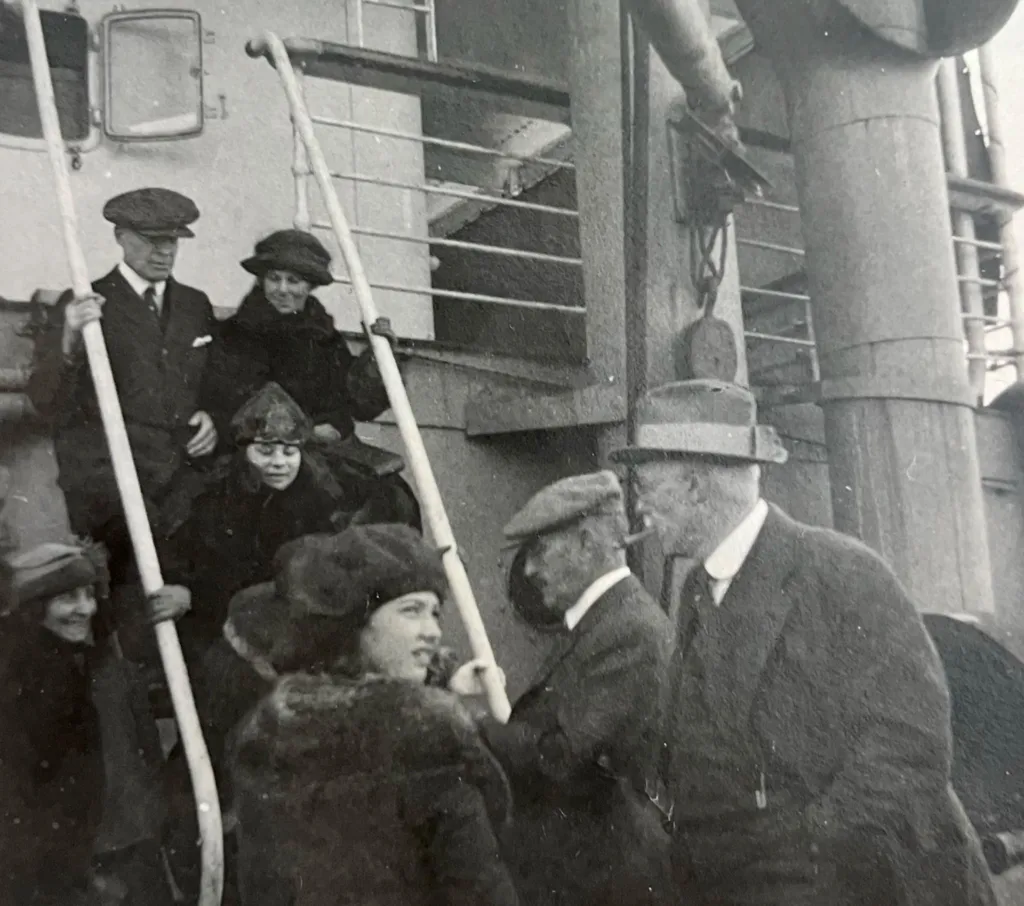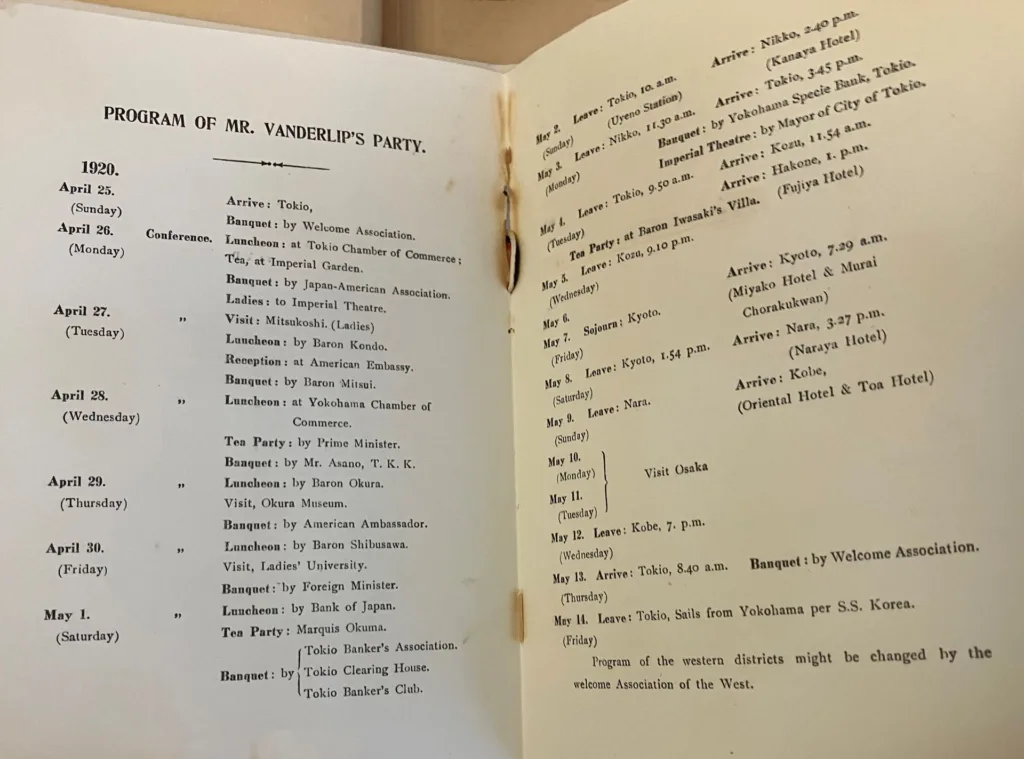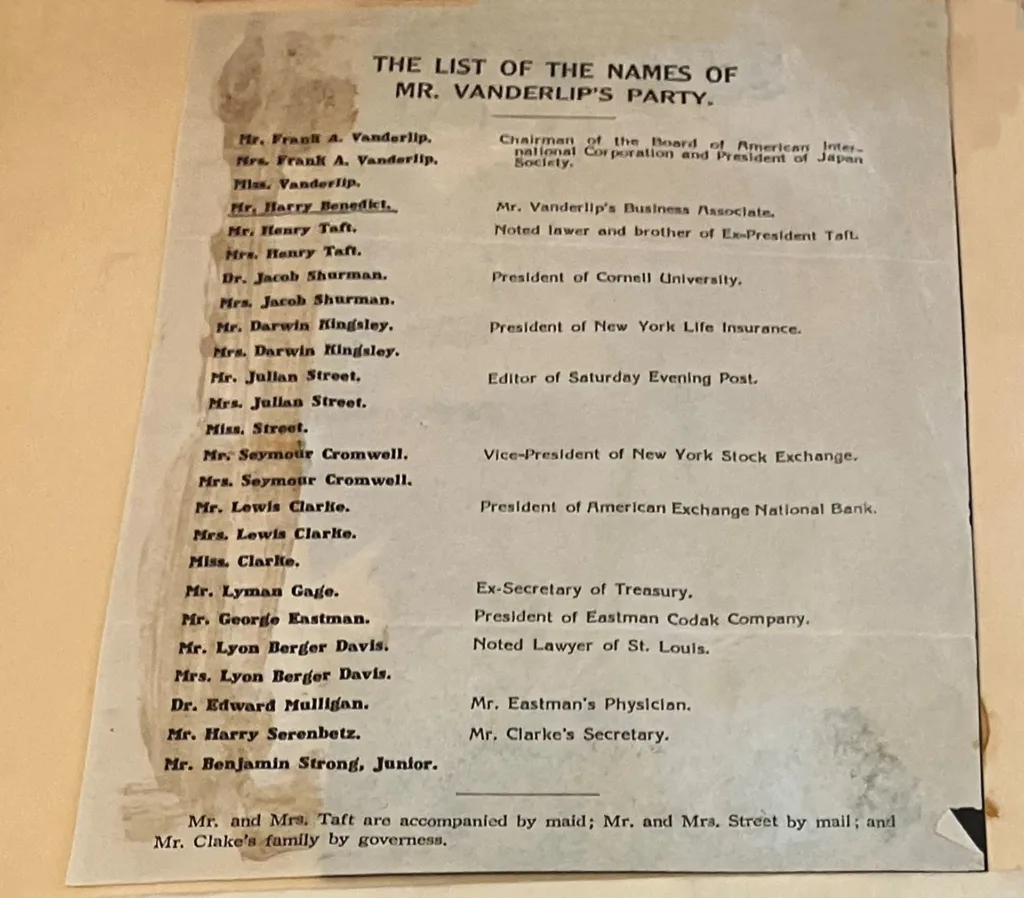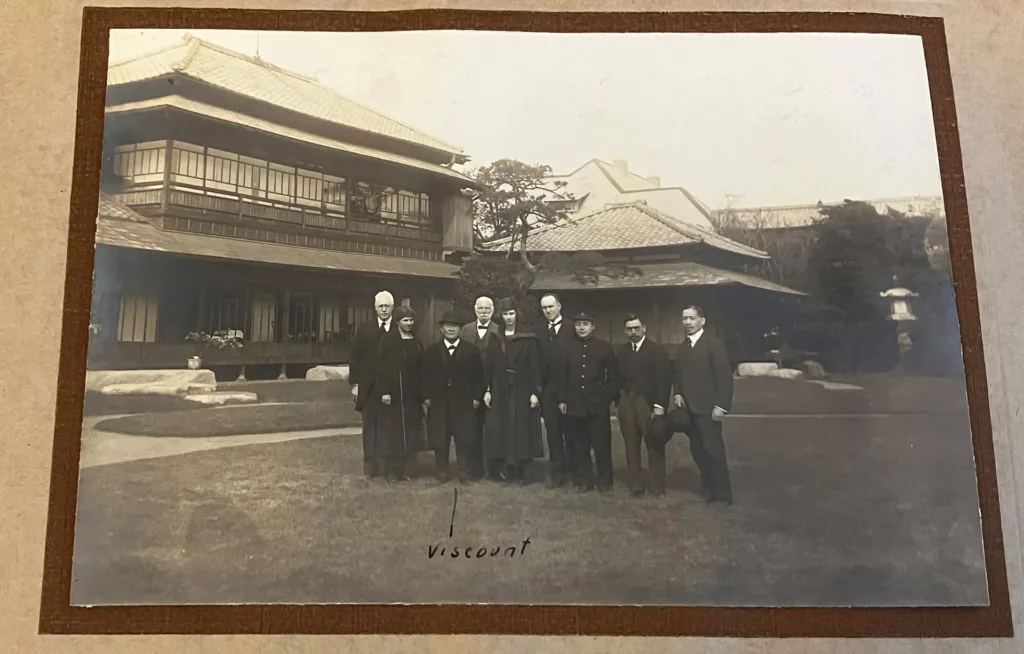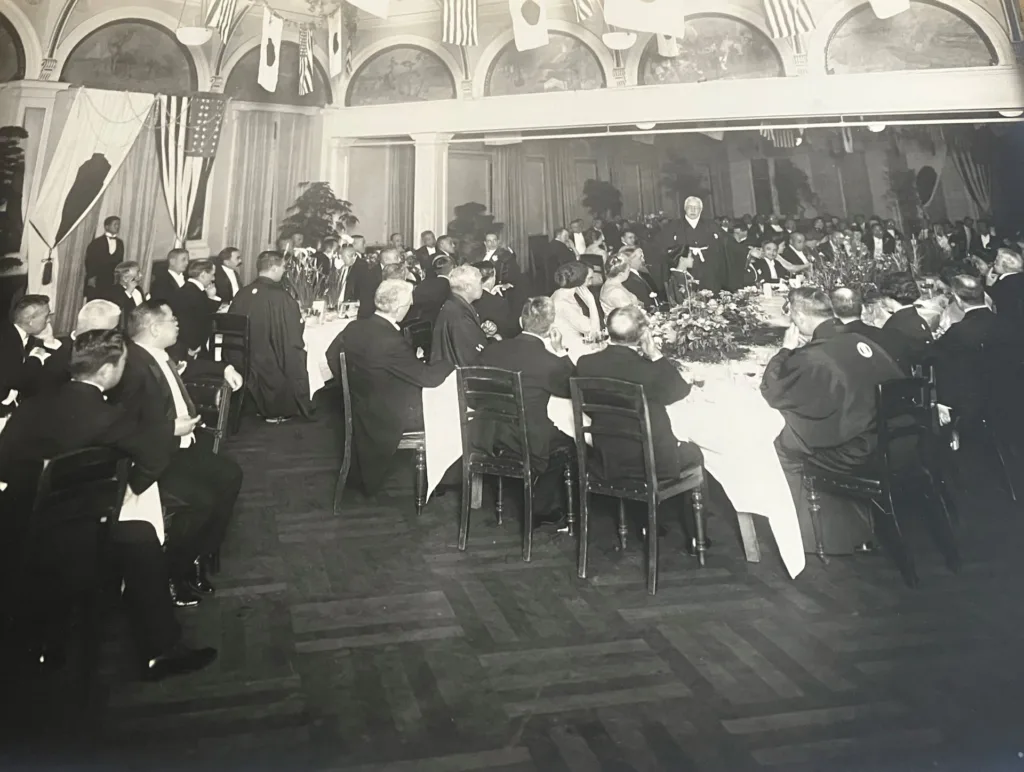Adventures from the Archives: Frank A. Vanderlip, Japan Society President 1920-1922

Japan Society Archives goes back in time to focus on Frank A. Vanderlip, President of Japan Society from 1920-1922. In 1920, Vanderlip and an entourage of key business associates and their families traveled to Japan for two months. The trip was an “Unofficial Conference on Japanese-American Affairs” at the invitation of The Welcome Association of Japan, a group of bankers and businessmen under the leadership of Prince Tokugawa Iesato. Among those present was Henry W. Taft, brother of former U.S. President William H. Taft, who was to become President of Japan Society from 1922-1929 and then again from 1934-1941. Japan Society’s Archives holds two scrapbooks from this trip, both donated in 1995 by Stephen Benedict, the son of Harry E. Benedict, Vanderlip’s longtime personal secretary and assistant. The first scrapbook is a visual record of the trip by Mr. Benedict, including menus, calling cards, postcards, photographs, and newspaper clippings covering the speeches given by both Vanderlip and Benedict. The second is a formal photo album presented to each member of the group by The Welcome Association of Japan. At the time of the trip, Vanderlip was Chairman of the Board of Directors of American International Corporation as well as President of Japan Society.
Vanderlip’s tenure as President of Japan Society was only a brief interlude in a remarkable life. Born in 1864 into an impoverished family on a farm in Oswego, Illinois, he worked in a factory machine shop before becoming a financial journalist, rising to Financial Editor of The Chicago Tribune. From Chicago, Vanderlip followed banker Lyman Gage, who had been appointed Secretary of the Treasury under President McKinley, to Washington, DC, where he served for three months as Gage’s personal assistant before being named Assistant Secretary of the Treasury. Vanderlip’s public success in floating a $200,000,000 Spanish war loan brought him to the attention of James Stillman, President of the National City Bank [now Citi], who invited him to join the bank as a Vice President.
At the bank, Vanderlip broke precedent by actively soliciting new accounts, something that had never been done before. A commitment to write a series of articles on “The American Commercial Invasion of Europe” for Scribner’s magazine irked Stillman—until the two men made an introductory call on a visiting Japanese banker, the Viscount Shibusawa, who noted by the “most happy coincidence” that what he was currently reading was “the translation of some articles about the American commercial invasions of Europe written by Frank A. Vanderlip.” [Farm Boy to Financier, Frank A. Vanderlip and Boyden Sparkes, 1935.]
In 1909, Stillman became Chairman of the Board and Vanderlip was elected President of the National City Bank at the age of 45. In 1910, Vanderlip was a member of a secret conclave who met on Jekyll Island in Georgia to draft a bill for Congress to create a federal reserve aimed at correcting the weaknesses of the banking system revealed in the 1907 panic. The bill didn’t pass, but Vanderlip’s foundational work is reflected in the Federal Reserve System subsequently created in 1913. Vanderlip resigned from the bank in 1919, traveling extensively in Europe and Asia as well as dividing his time between his estate, Beechwood, in Briarcliff Manor, New York and developing his holdings in Palos Verdes, California. He passed away in 1937.
